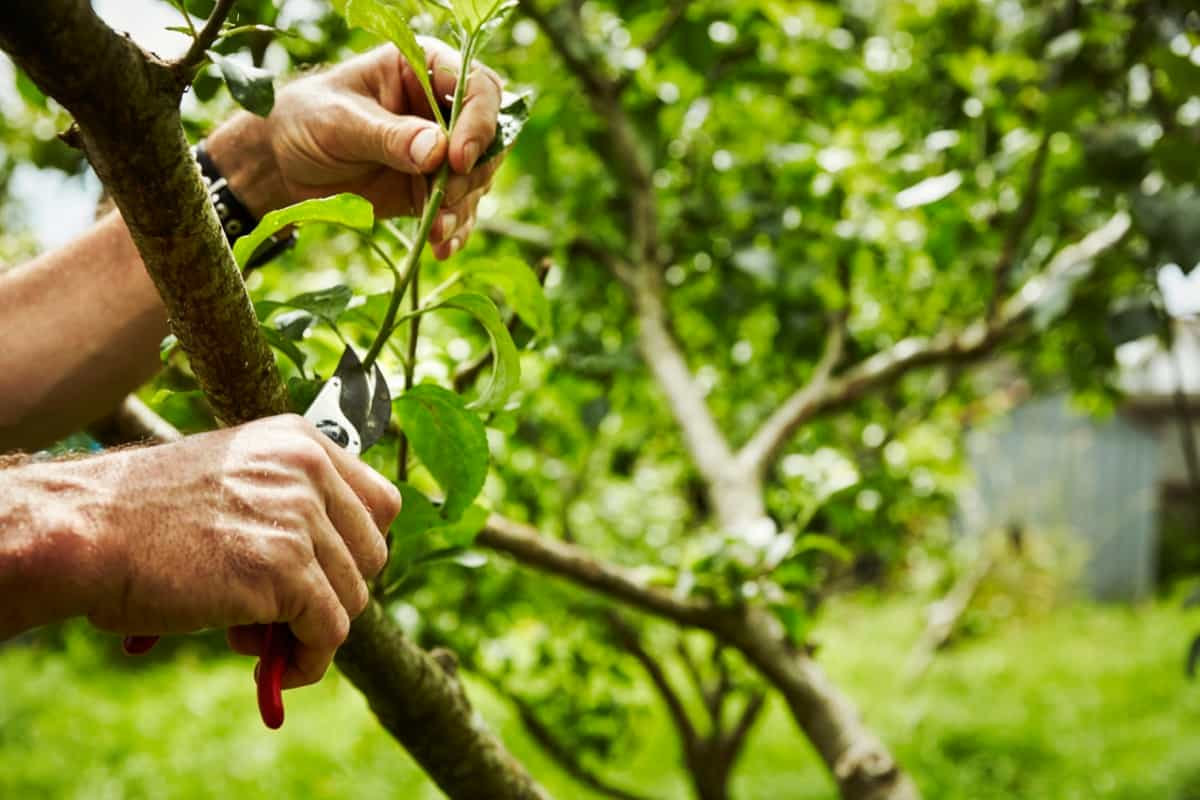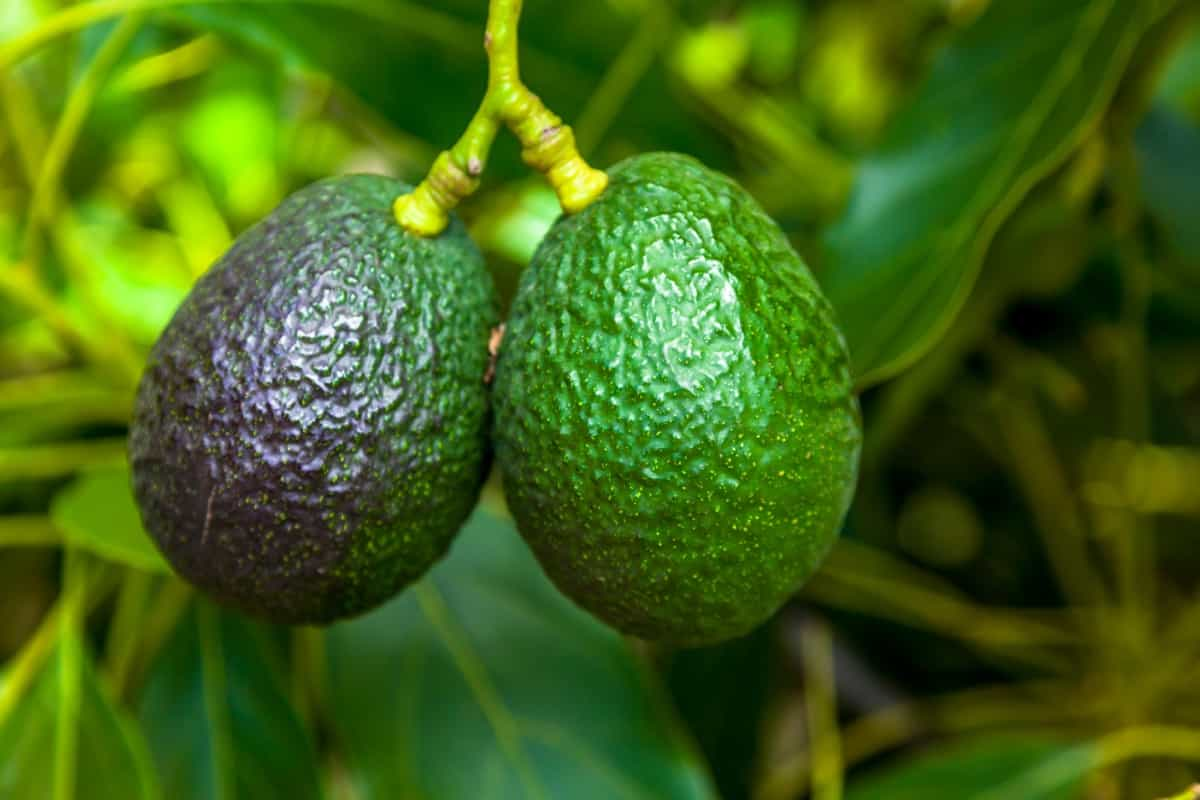Training and pruning are essential practices in the cultivation of avocado trees. Training involves shaping the tree’s growth, ensuring optimal tree structure, and facilitating sunlight penetration. Conversely, pruning involves removing dead, diseased, or damaged branches to maintain tree health and promote fruit production.

These practices improve tree vigor and longevity and enhance fruit quality and yield. By understanding the principles and techniques of training and pruning, avocado growers can effectively manage their orchards and maximize their harvests.
Training and Pruning of Avocado Tree
Understanding the Growth Habits of Avocado Trees
Avocado trees, scientifically known as Persea americana, are known for their lush, evergreen foliage and delicious fruits. These trees are native to Central and South America but are now cultivated worldwide. Avocado trees are typically medium to large, reaching heights between 5 to 8 meters.
They have a spreading canopy with dense, dark green leaves. Avocado trees are also known for their shallow root system, which requires well-draining soil. They thrive in warm climates with mild winters and moderate rainfall. Avocado trees are generally slow-growing, taking several years to bear fruit. However, they can yield abundant harvests for decades once they start producing.
The Importance of Training and Pruning for Avocado Tree Health and Productivity
- Training involves shaping the young tree by removing unwanted branches and encouraging a strong framework. This helps in preventing structural issues and promoting efficient nutrient distribution.
- Conversely, pruning involves removing dead, damaged, or diseased branches, which lowers the risk of infection and enhances overall tree health.
- Additionally, pruning helps maintain the ideal tree size for optimal fruit production and facilitates better sunlight penetration.
- Regular training and pruning practices improve avocado tree health and productivity, which results in higher yields and better fruit quality.
When to Start Training and Pruning Avocado Trees
Training and pruning avocado trees are essential for optimal growth and fruit production. It is recommended to start training avocado trees when young, ideally within the first year of planting. This allows for the establishment of a strong framework and desired tree shape. Pruning should be done during the dormant season, usually in late winter or early spring, when the trees are not actively growing.
This helps to minimize stress and promotes better healing of pruning wounds. Regular pruning throughout the tree’s life is necessary to maintain its size, shape, and overall health. Proper timing and techniques are crucial for successful training and pruning of avocado trees.
Techniques for Training Young Avocado Trees
- Stake and Support: Insert a sturdy stake next to the young tree and tie it gently with a soft material. This helps provide support and stability, especially during windy conditions.
- Pruning: Regularly prune the young avocado tree to promote a strong structure. Remove any dead, damaged, or crossing branches to maintain an open canopy.
- Tying and Bending: Gently tie branches down to encourage lateral growth and prevent upward growth dominance. This helps the tree develop a balanced shape.
- Thinning: Thin out excessive branches to allow better sunlight penetration and airflow. This prevents the risk of diseases and ensures optimal fruit production.
- Training Systems: Consider training systems like a central leader or open center based on the tree’s growth habits and available space.
In case you missed it: Avocado Tree Propagation and Pollination: Methods and Strategies

Pruning Strategies for Mature Avocado Trees
- Crown Thinning: Remove some of the inner branches to allow better air circulation and sunlight access.
- Deadwood Removal: Eliminate any dead or diseased branches to prevent the spread of infection.
- Crown Reduction: Reduce the overall size of the tree by cutting back long branches, promoting a more manageable shape.
- Lateral Branch Pruning: Trim excessive lateral branches to encourage stronger growth and prevent overcrowding.
- Canopy Elevation: Raise the lower branches to improve access for maintenance and allow better light distribution.
- Fruit Thinning: Remove excess fruit to promote larger, healthier avocados and prevent branch breakage.
- Watersprout Removal: Prune off water sprouts or suckers that emerge from the trunk or branches to maintain tree health.
- Crossing Branch Removal: Eliminate branches that rub against each other to prevent damage and encourage better growth.
Proper Tools and Equipment for Training and Pruning Avocado Trees
- One of the primary tools required is a pruning shear or secateurs, which is used to remove dead or damaged branches.
- Loppers come in handy for cutting thicker branches. A pruning saw is necessary for larger branches or limbs.
- To train the young avocado tree, you will need stakes and ties to support its growth.
- Additionally, a pruning sealant can protect the tree from diseases after cutting.
- Gloves and safety goggles are essential for personal protection. These tools and equipment will ensure that you can maintain the health and shape of your avocado trees efficiently.
Common Mistakes to Avoid in Avocado Tree Training and Pruning
- One mistake is improper timing. Pruning should be done during the dormant season to avoid stressing the tree and interfering with fruit production.
- Another mistake is excessive pruning. Removing too many branches can lead to sunburn and reduced fruit yield.
- Additionally, neglecting to remove dead or diseased branches can hinder tree health and productivity.
- Lastly, improper pruning techniques, such as making flush cuts or leaving stubs, can lead to disease and decay.
Benefits of Regular Maintenance Pruning for Avocado Trees
- Firstly, pruning helps control the tree’s size and shape, making it more manageable and easier to harvest.
- Additionally, pruning promotes better air circulation and sunlight penetration, leading to improved fruit production and quality.
- By removing dead, damaged, or diseased branches, pruning also prevents pests and diseases from spreading.
- Moreover, regular pruning enhances avocado trees’ overall health and longevity by stimulating new growth and ensuring a strong and sturdy structure.
- Overall, investing time and effort in regular maintenance pruning can significantly improve the productivity and well-being of avocado trees.
Advanced Techniques for Specialty Pruning of Avocado Trees
- One technique is crown reduction, which reduces the height and width of the tree, promoting better light penetration and air circulation.
- Another technique is selective pruning, where specific branches are removed to redirect growth and improve tree structure.
- Additionally, tip pruning encourages branching and increases fruiting potential.
- Thinning is another important technique that removes excess branches to maintain a balanced canopy.
- Lastly, training young trees using techniques like a central leader or open-center pruning helps establish a strong framework for future growth.
In case you missed it: Growing Avocados in California: For Southern, Northern, Eastern, Western, and Central Regions

Conclusion
Training and pruning are essential practices for properly growing and maintaining avocado trees. By regularly training and pruning avocado trees, farmers and gardeners can ensure higher yields, improve fruit quality, and prolong the tree’s lifespan. Such practices are crucial for successful avocado cultivation.
- Ultimate Guide to Ossabaw Island Hog: Breeding, Raising, Diet, and Care
- Ultimate Guide to Juliana Pig: Raising Facts, Size, Diet, Care, and Lifespan
- Raising Lleyn Sheep: Disadvantages, Price, Uses, Characteristics, and Care
- Ultimate Guide to Meishan Pig: Breed Facts, Breeding, Raising, and Care
- Ultimate Guide to Teacup Pigs: Raising, Diet, Lifespan, Cost, and Care
- Guide to Raising Poll Dorset Sheep: Facts, Profile, Characteristics, Uses, and Care
- Ultimate Guide to Bighorn Sheep: Characteristics, Diet, Lifespan, Breeding, and Lifecycle
- Ultimate Guide to Raising Katahdin Sheep: Farming Facts, Breed Profile, Uses, and Care
- Ultimate Guide to Raising Oreo Cows: Belted Galloways Farming Facts, Profile, Uses, and Care